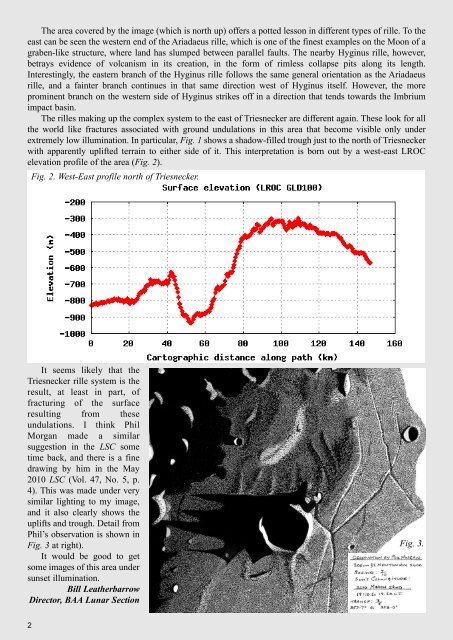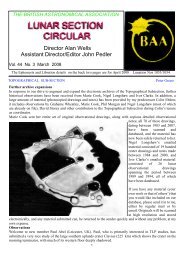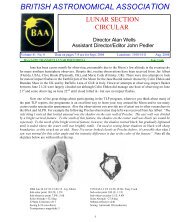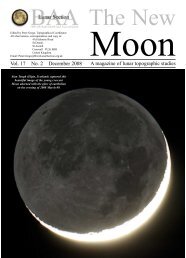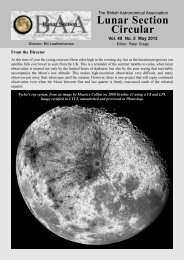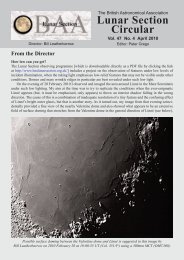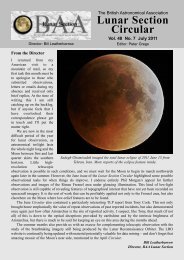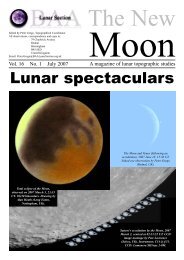Vol 50, No 4, April 2013 - BAA Lunar Section
Vol 50, No 4, April 2013 - BAA Lunar Section
Vol 50, No 4, April 2013 - BAA Lunar Section
- No tags were found...
Create successful ePaper yourself
Turn your PDF publications into a flip-book with our unique Google optimized e-Paper software.
The area covered by the image (which is north up) offers a potted lesson in different types of rille. To theeast can be seen the western end of the Ariadaeus rille, which is one of the finest examples on the Moon of agraben-like structure, where land has slumped between parallel faults. The nearby Hyginus rille, however,betrays evidence of volcanism in its creation, in the form of rimless collapse pits along its length.Interestingly, the eastern branch of the Hyginus rille follows the same general orientation as the Ariadaeusrille, and a fainter branch continues in that same direction west of Hyginus itself. However, the moreprominent branch on the western side of Hyginus strikes off in a direction that tends towards the Imbriumimpact basin.The rilles making up the complex system to the east of Triesnecker are different again. These look for allthe world like fractures associated with ground undulations in this area that become visible only underextremely low illumination. In particular, Fig. 1 shows a shadow-filled trough just to the north of Triesneckerwith apparently uplifted terrain to either side of it. This interpretation is born out by a west-east LROCelevation profile of the area (Fig. 2).Fig. 2. West-East profile north of Triesnecker.It seems likely that theTriesnecker rille system is theresult, at least in part, offracturing of the surfaceresulting from theseundulations. I think PhilMorgan made a similarsuggestion in the LSC sometime back, and there is a finedrawing by him in the May2010 LSC (<strong>Vol</strong>. 47, <strong>No</strong>. 5, p.4). This was made under verysimilar lighting to my image,and it also clearly shows theuplifts and trough. Detail fromPhil’s observation is shown inFig. 3 at right).It would be good to getsome images of this area undersunset illumination.Bill LeatherbarrowDirector, <strong>BAA</strong> <strong>Lunar</strong> <strong>Section</strong>Fig. 3.2


